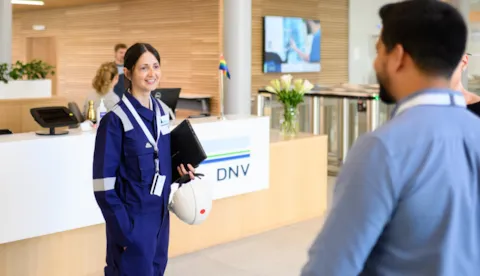Lessons from the audit room: Why quality needs to evolve
Over the past decades, I’ve worked closely with organisations across many industries, supporting certification, running audits, and helping teams build stronger management systems. What’s become increasingly clear is that quality management is no longer just about compliance, but that it’s about adaptability, learning, and leadership.
Whether I’m reviewing an internal audit programme, assessing how non-conformities are handled, or talking with leadership teams about their goals, the same question often surfaces:
How well is our system helping us manage change and deliver consistent value?
“Excellent processes are the basis for economic success. But they only work when they’re connected to strategy, risk, and culture, not isolated in a manual.”
Quality as a living system
We’re seeing a shift in how quality is viewed. It’s no longer just about certification, but rather organisations are under pressure to manage uncertainty, demonstrate integrity, and respond quickly when things go wrong. Planned updates to ISO standards reflect this trend: with increasing emphasis on ethics, organisational values, climate, and resilience.
At the same time, audit data shows recurring challenges:
- Weak or unclear root cause analysis
- Audit findings that aren’t followed up effectively
- Quality objectives disconnected from the organisation’s direction
- Emergency and continuity planning are handled separately from risk and process control
These are not technical issues, they’re systemic ones. And they highlight the need for quality systems that are truly integrated into how organisations think, plan, and improve.
Connecting the dots with digital tools
Modern quality tools can support this shift. They offer visibility, structure, and a way to ensure that audits, corrective actions, process risks, and operational changes are not only tracked, but understood.
“If we want to build organisations that learn, we need systems that show us where we’re learning - and where we’re not.”
The goal isn’t to digitalise for its own sake. It’s to create a clearer link between what’s happening in the business, and what needs to happen in the system. That’s what strengthens resilience.
Bringing quality into the bigger picture
In high-risk industries, quality is inseparable from safety, environmental responsibility, and business continuity. I see more and more organisations recognising this and moving toward integrated approaches where quality isn’t a department, but a shared responsibility supported by the right tools.
For those looking to move in this direction, quality management software that connects with broader risk and operational systems can make a real difference. Synergi Life is one such platform I’ve seen support this integration well.
But ultimately, the tools only work if the mindset is there.
And in my experience, that shift - from compliance to connection - is where the real improvement begins.

Beatrice Maier is a Principal Consultant, Lead Trainer, and Auditor at DNV, with over 30 years of experience in management systems.
Her expertise lies in helping organisations design and implement effective, risk-based Quality Management Systems that drive continuous improvement and long-term success.
Beatrice is a passionate advocate for structured, ISO-aligned approaches that connect quality, strategy, and culture across all levels of an organisation.

